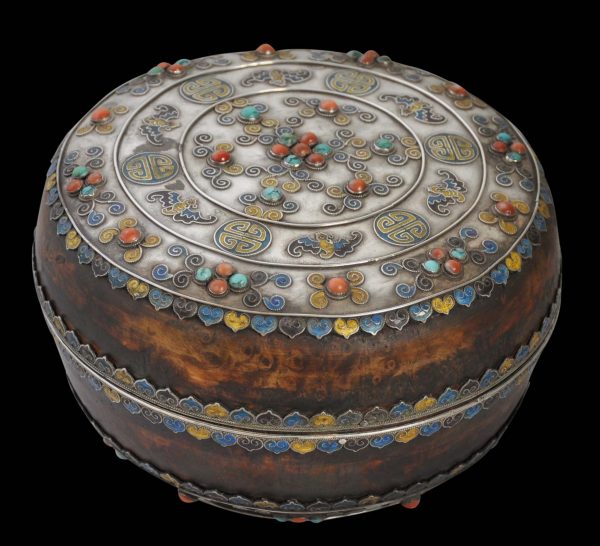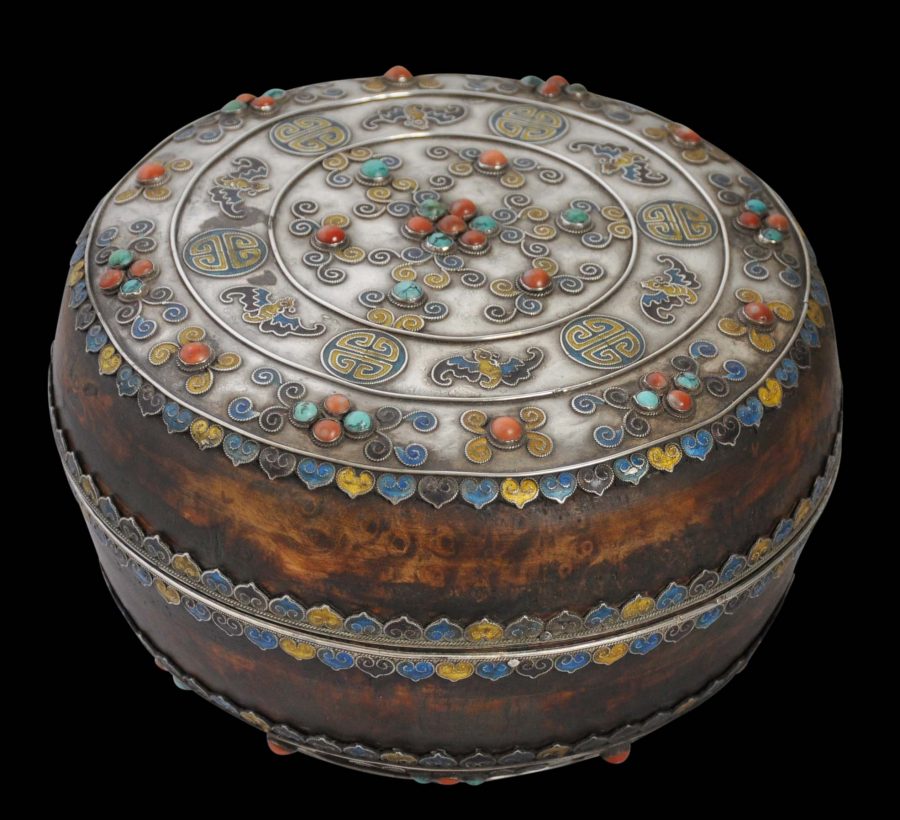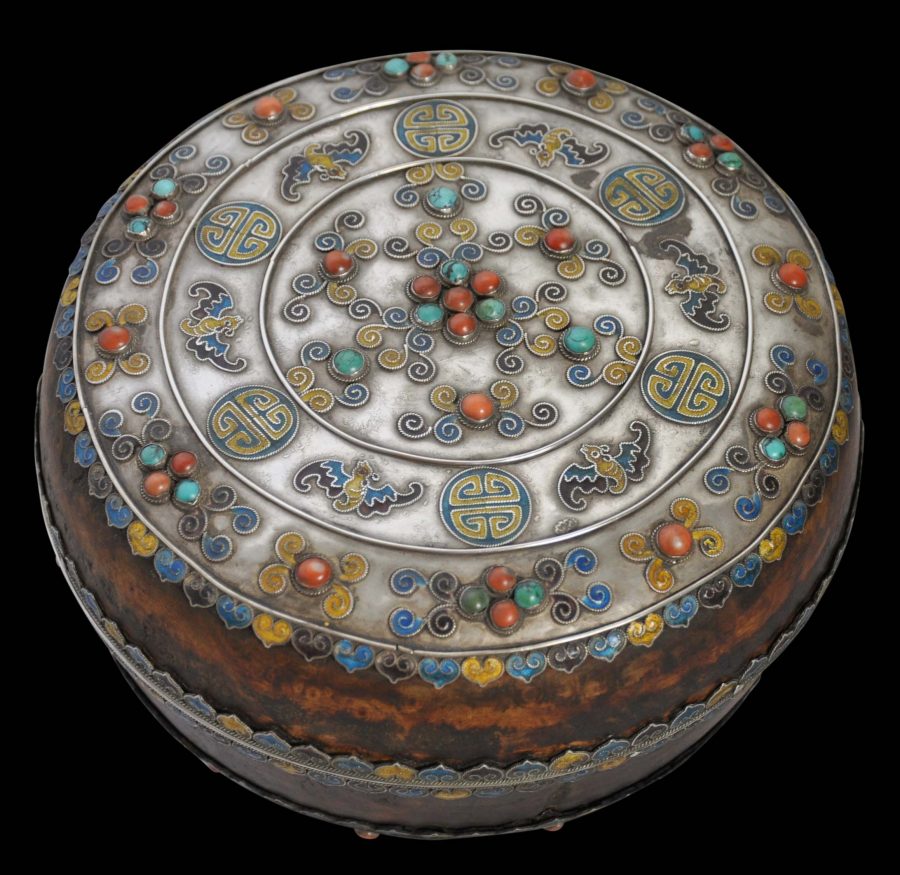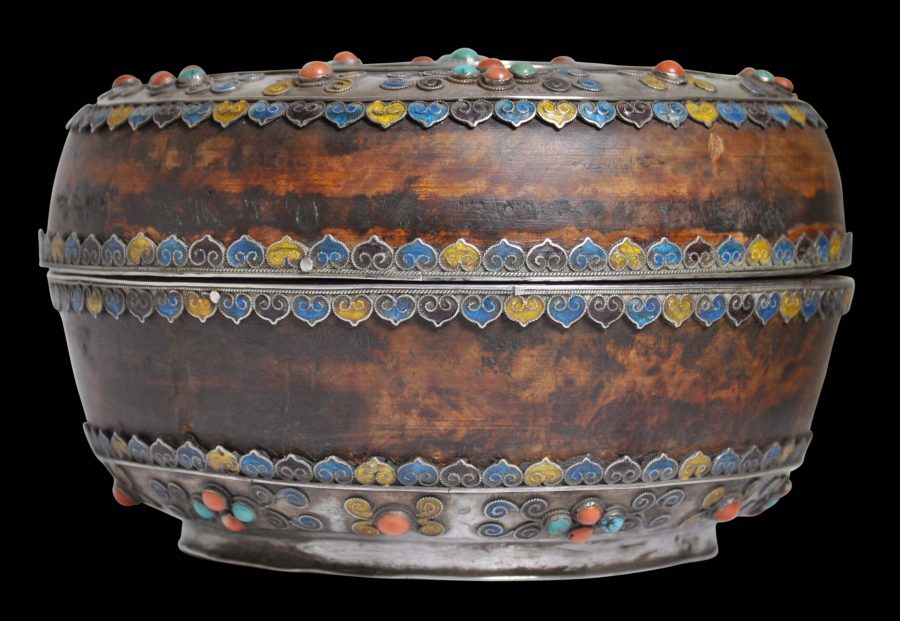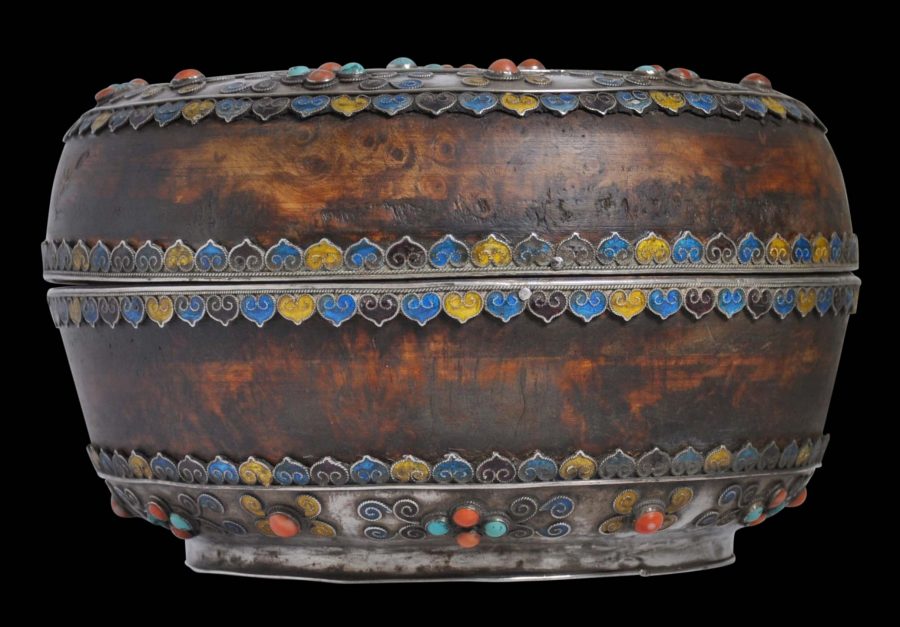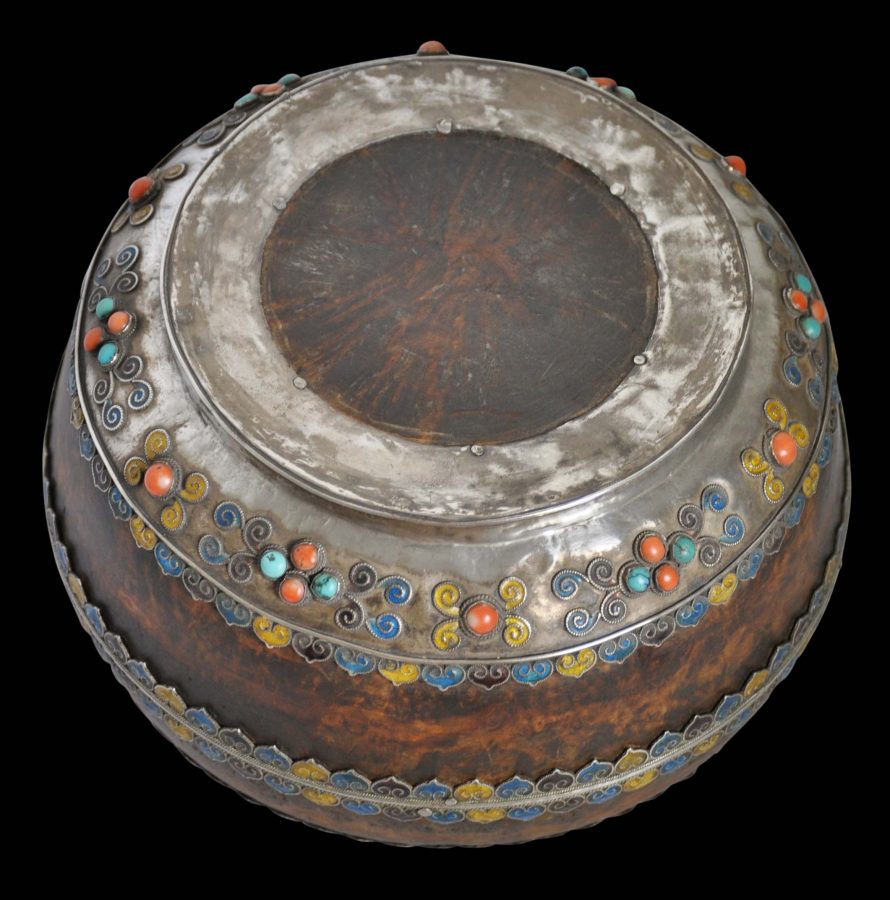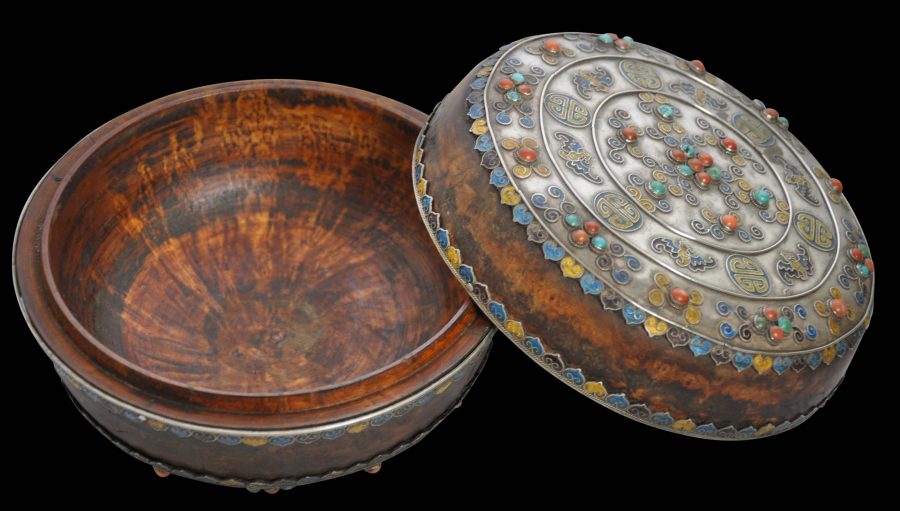This large, splendid tsampa box pf typical flattened spherical form comprises a bowl and cover. It is made of turned burlwood, probably rhododendron burlwood, with silver mounts that have been overlaid with fine, pearled, silver wire filigree, enamelled, and inset in box settings with coral and turquoise cabochons.
The cover has a roundel to the top of hammered silver sheet and is decorated with Sino-Mongolian motifs such as bats and long-life motifs.
The rims of the cover and bowl are mounted with silver bands with petalled, enamelled edging.
The lower part of the base of the bowl is similarly decorated with silver but which is also decorated with turquoise and coral cabochons.
The box stands on a silver-clad, ring foot.
The soft orange-red hue of the coral suggests it comes from the waters around China, rather than having the more brighter red hue that is more typically found on Tibetan pieces for which the coral is more likely to have Mediterranean origins.
The use of enamelling on a tsampa box is unusual. We are not aware of other such examples.
Tsampa boxes are closely related to the tea bowls used in Mongolia and Tibet in terms of their form and the materials used in their construction. They were used to hold and serve tsampa, a ubiquitous Himalayan staple food made from ground parched barley grain mixed with salted yak buttered tea.
The box is in fine condition. There are no repairs and all the original stones are intact.
References
Sheeks, R., ‘Tibetan and Mongolian tsampa boxes’, Arts of Asia, March-April 1996.


